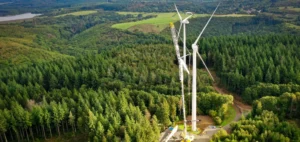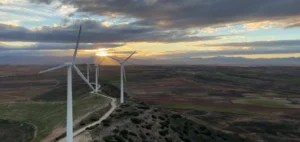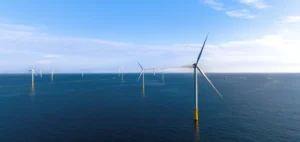The renewable energy sector has taken a significant step forward with the recent innovation of Hoffmann Green Cement Technologies and the VALOREM Group. The two companies have collaborated to produce the first clinker-free decarbonated concrete foundation for a wind turbine, marking a milestone in the evolution of energy infrastructure. This project, located in the Plaine des Moulins wind farm in Jazeneuil, opens up new prospects for the cement and renewable energy industries.
A major technological advance
Building this foundation with 630 m³ of decarbonated concrete reduced CO2 emissions by 33 tonnes, i.e. 32% less than with conventional concrete. This innovative concrete, developed by Hoffmann Green, integrates perfectly with current construction methods without requiring major modifications. The Plaine des Moulins wind farm, comprising five 180-metre-high wind turbines, will generate around 42 GWh of green electricity a year, boosting the region’s energy supply.
Collaboration and industrial development
The development of this concrete required five years of rigorous testing to guarantee its performance and durability. The CSTB (Centre Scientifique et Technique du Bâtiment) has issued Appréciations Techniques d’Expérimentation (ATEx) after an in-depth evaluation. A number of partners played a crucial role in the project, including CTE Wind for foundation design, and RBS and Lepine TP for testing and prototyping. This collaboration demonstrates the importance of technical partnerships in the development of new industrial solutions.
Impact on the renewable energy market
The project is in line with France’s ambitious target of 33% renewable energy by 2030. Hoffmann Green Cement Technologies, with its carbon-free concrete solutions, is well positioned to capitalize on this growth. The wind power sector, in particular, should see the development of nearly 300 projects in the medium term, creating significant opportunities for market players.
Economic and industrial outlook
This world first demonstrates the potential of low-carbon technologies to transform the construction sector. VALOREM, through its subsidiary VALREA, and Hoffmann Green Cement Technologies show that innovation can reduce costs and improve the sustainability of energy infrastructures. By continuing to invest in research and development, these companies are strengthening their strategic position in the renewable energy market, paving the way for new business opportunities.
Innovation in building materials, stagnant for decades, is undergoing a radical transformation. Hoffmann Green Cement’s international expansion continues to play a key role in the industry’s evolution, proving that innovation and collaboration are essential to meeting today’s economic and environmental challenges.






















